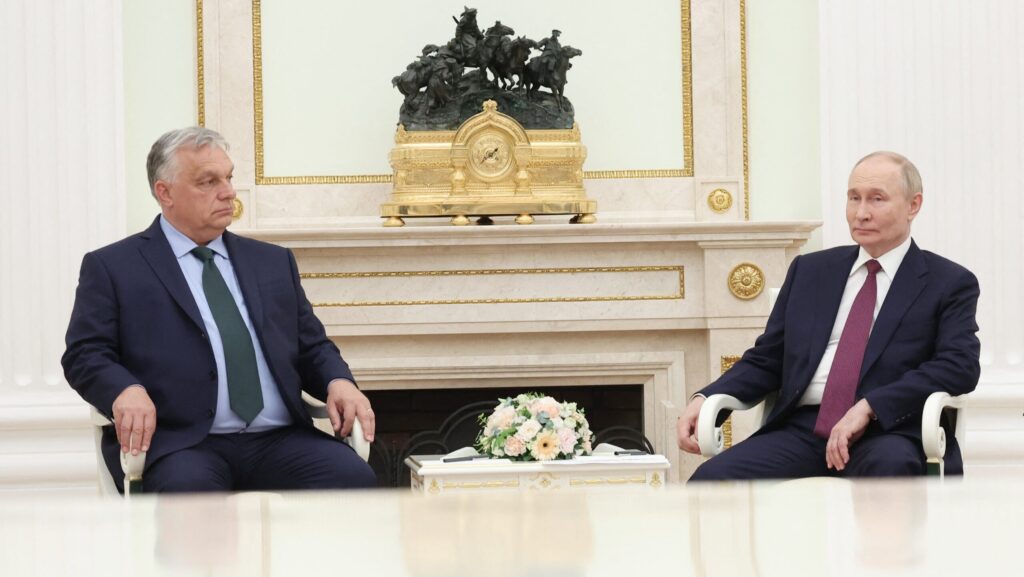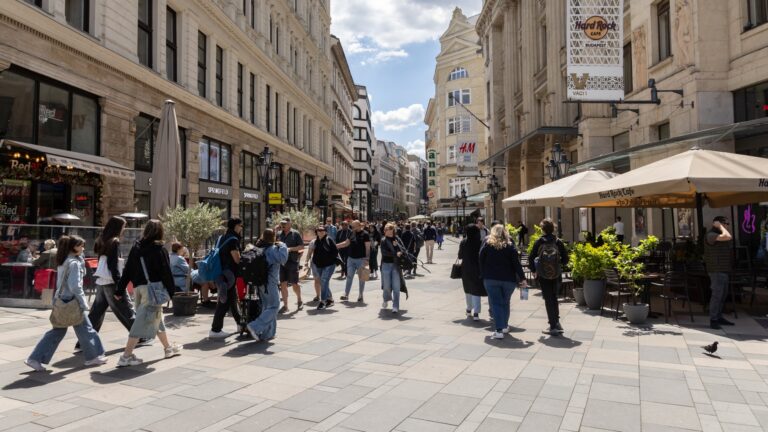The US–Russian–Ukrainian peace talks went on a long rollercoaster ride in the past week. In Hungary, Donald Trump’s 28-point peace plan was hailed as giving the peace talks a ‘new momentum’. The same 28 points were not only dismissed, however, in Brussels, but they were opposed so much so that a senior EU politician said: ‘Witkoff [Trump’s special envoy, who was involved in drafting the proposal] needs to see a psychiatrist.’
The EU swiftly responded to Washington’s plan with a counterproposal. Since then, Ukraine—together with European leaders—negotiated with the US administration and amended the original points, narrowing them down to 19. Needless to say, the Kremlin has de facto already rejected the 19-point plan put together in Geneva by Ukraine and its European allies.
Orbán Viktor on X (formerly Twitter): “President @realDonaldTrump’s peace initiative has gained new momentum. A 28-point peace plan is on the table, an American negotiating delegation is in Kyiv, and expectations are high worldwide. The American President is a persistent maverick. If he had been President at the time,… pic.twitter.com/J2cagATvc5 / X”
President @realDonaldTrump’s peace initiative has gained new momentum. A 28-point peace plan is on the table, an American negotiating delegation is in Kyiv, and expectations are high worldwide. The American President is a persistent maverick. If he had been President at the time,… pic.twitter.com/J2cagATvc5
While the content of the 19-point plan is, as of now, unknown to the public, the two competing 28-point plans drafted by Washington and Brussels already allow us to speculate about their visions for the European continent’s post-war future. Despite accusations that the plan proposed by Trump ‘rewards aggression’, the very first point of Washington’s original 28-point plan (echoed in the European one as well) is to (re)confirm Ukraine’s sovereignty. The plan(s) also put emphasis on lessening human suffering, swapping prisoners of war, reuniting families and returning bodies of fallen soldiers.
Broad Agreement on Some Points
Both plans outline a comprehensive non-aggression agreement between Russia, Ukraine, and Europe (or NATO). It would answer fears echoed even by high-ranking military officers across Europe that Russia is preparing to attack NATO in the coming four years. These accusations have been repeated over and over again in Europe, despite Russia repeatedly claiming that it has no intention of attacking NATO or the EU, indeed.
Crucially, the proposals converge on the need to extend existing non-proliferation and nuclear arms-control treaties between the United States and Russia. They also reaffirm Ukraine’s non-nuclear status and approve restarting the Zaporizhzhia power plant, noting that the generated electricity should be split equally (50–50) between Russia and Ukraine.
There is also alignment on Ukraine’s eligibility for EU membership, and that, until it is negotiated, Kyiv can gain access to the European market. Countries can be admitted into the EU only if current members unanimously approve, and Hungary is opposing Kyiv’s EU entry.
Both plans emphasize the need to rebuild Ukraine and support its reconstruction with a global package of measures. As part of envisioning Ukraine’s economic future, Brussels and Washington both agreed that Russia must allow Ukraine to use the Dnieper River for commercial activities.
‘Both plans outline a comprehensive non-aggression agreement between Russia, Ukraine, and Europe’
Although the two plans agree that Ukraine should adopt EU rules on religious tolerance and the protection of minorities, the Trump plan is more detailed on this matter. Firstly, Washington’s plan would prohibit discriminatory measures against Russian and Ukrainian media and education in both countries. Secondly, it also states that ‘all Nazi ideology and activities must be rejected and prohibited’. As the latter provision echoes the Kremlin’s narrative—which claims that Ukraine is a Nazi state—it was swiftly rejected by Brussels.
Disagreement on Crucial Points
One of the most significant differences between the two plans is how they approach the territorial dimension of the war. Washington proposes to recognize Crimea, Luhansk and Donetsk as de facto Russian, and freeze the conflict at the battlelines in Kherson and Zaporizhzhia oblasts. On the one hand, Russia would have to withdraw from territories it now controls in other Ukrainian oblasts; on the other hand, Ukraine would also have to withdraw its troops from the parts of Donetsk it still controls.
Naturally, the European plan disagrees with this proposal and recommends freezing the frontlines as they are, with the option to negotiate territorial swaps later. In principle, Brussels strongly opposes forcing Ukraine to cede territory as part of the peace deal.
The European peace plan also completely erased the crucial third point from Trump’s plan: ‘It is expected that Russia will not invade neighbouring countries and NATO will not expand further.’ It is clear that the suggestion of halting NATO enlargement prompted European leaders to delete this point in its entirety. Later, point 7 returns to the question of NATO, and Trump’s plan states that both Ukraine and NATO shall officially enshrine in their founding documents that Kyiv will not seek admission and will not be admitted into the military alliance.
In Europe’s plan, Ukraine’s NATO admission is not excluded; instead, the proposal states that it depends on the ‘consensus of NATO members’. It is doubtful, however, that Moscow would sign up for a peace deal that does not explicitly rule out Ukraine’s NATO entry.
While the two plans agree that the US should be Ukraine’s security guarantor (and that it should be compensated for it), they diverge significantly on the nature of the security guarantees that should be provided to Ukraine. The Trump plan talks of ‘reliable’ while the European version is of ‘robust’ guarantees. Similarly, in point 10 (c), in case Russia invades Ukraine, the Washington proposal speaks of ‘a decisive coordinated military response’, while Brussels talks of a ‘robust coordinated military response’. While this point has a (d) scenario attached to it in Trump’s proposal—in which Ukraine could lose its security guarantees if it launches missiles at Moscow or St Petersburg without cause—this (d) scenario is excluded from Europe’s plan.
Similarly, while the Trump plan would expand Ukraine’s military to 600,000 troops, Brussels proposes a cap of 800,000. Current estimates place the force at 800,000–1,000,000 personnel. Beyond troop numbers, both proposals also address the potential deployment of foreign forces in the country. While Trump would prohibit NATO from stationing troops on the territory of Ukraine, under Europe’s plan, NATO troops could not stay permanently in Ukraine.
‘While the Trump plan would expand Ukraine’s military to 600,000 troops, Brussels proposes a cap of 800,000’
The two plans also disagree on Russia’s future after the war. Trump’s proposal envisions reintegrating Russia into the global economy and lifting sanctions, whereas the European roadmap mentions only ‘sanction relief’ for Moscow. Both include a provision to invite Russia back to the G8, though German Chancellor Friedrich Merz vehemently opposed the idea.
The approaches also diverge regarding Russia’s frozen assets: while Europe proposes giving these funds in their entirety to Ukraine for reconstruction, under Trump’s plan, the assets would be unfrozen and partially used for Ukraine’s rebuilding. Under Trump’s plan, 50 per cent of the profits from Ukraine’s rebuilding would go to the US.
Hungary has expressed its desire for peace multiple times since the war began. The Hungarian government firmly believes that ending the war in Ukraine would not only halt the bloodshed but also have a positive impact on Europe’s economic progress and global standing. For these reasons, any genuine attempt to bring the conflict in Hungary’s neighbour to a close is welcomed in Budapest.
Related articles:







